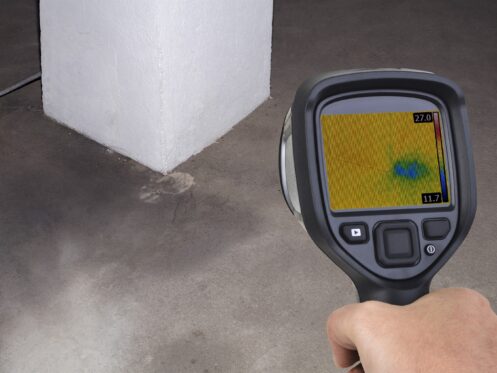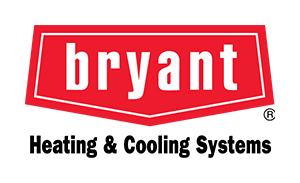Hidden plumbing leaks may not seem like much, but they can cause several serious issues throughout your home. Taking proactive measures allows you to catch existing leaks, even if you can’t see them, and have them repaired before accruing more damage. Knowing what to look for and what to do next could save you significant time, money, and stress.
What Damage Can Hidden Plumbing Leaks Cause?
Hidden leaks can cause significant damage. Cosmetically, excess moisture can lead to discoloration on the ceiling and peeling paint on the walls. Furniture might get damaged, whether from soaking up the moisture on the floor, absorbing it from the wall if it’s pushed against it, or water dripping onto it from the ceiling.
But hidden leaks put your home’s structure at risk. Your foundation could develop cracks, or wood framing can start to warp or rot. The electrical system is also in danger. Moisture and wiring are never a good mix and are a recipe for a fire breaking out.
Mold growth is a significant consequence of a plumbing leak. It can grow at any time throughout the year, even in winter, but it could especially happen during the summer when it’s hot and humid. Mold grows quickly, usually within 24 to 48 hours.
If a hidden plumbing leak goes undetected for several days or weeks (or even longer), mold can continuously spread. This puts your home and the health of anyone in it at risk for significant problems. The plumbing leak itself will also continue to worsen.
What Are the Most Common Plumbing Leaks?
The most common plumbing leaks take place in the kitchen and bathrooms. In the kitchen, they typically happen from the dishwasher, faucets, and pipes under the sink. Leaks in the bathroom usually occur from the faucet, toilet base, pipes under the sink, and showerhead. Water heater leaks are another common problem.
Indicators of a Hidden Leak
Many leaks are hidden behind walls or under the floor. You may notice wood flooring buckling or carpeting being unexplainably soaked. Here are some other indicators of a hidden leak.
Rising Utility Bills
You’ll likely see signs of a leak reflected on your utility bill. If your water bill rises for no reason, you may have a plumbing leak. You can check the water meter. Turn off all taps and water-using appliances. If the meter is still moving, you probably have a hidden leak.
Indicators on the Walls, Floors, and Ceilings
You might notice signs of a leak on your floors, walls, and ceilings. For instance, there might be moisture spots, discoloration, peeling paint, or water bubbles. If you see a water bubble, don’t attempt to pop it. Leave it as-is, and our technicians will assess the situation and advise you on the best course of action.
Odd Smells or Noises
Pay attention to musty smells. Leaks can quickly lead to mold growth, and the smell is often the first indicator. Also, take notice of the smell of rotting wood or wet paper, as this could indicate a leak in the walls.
If you hear running water when no taps are on, you probably have a water leak. Also, don’t ignore the sound of dripping water.
Low Water Pressure
Sudden low water pressure is often a key indicator of a water leak. If it’s to the whole home, you probably have a leak in the main line. If a particular tap or the shower experiences low water pressure, the problem may be isolated to that area.
Can Doing Self-Inspections Spot Leaks?
Once a leak is suspected, the location of the leak must be identified. Water can travel a long way before it appears in your home. Self-inspections are monumental for helping to spot leaks. Annual professional inspections are crucial, but checking yourself in between allows you to notice leaks or other types of damage and notify us immediately.
We recommend performing regular self-inspections. It’s ideal to do them weekly, at the very least. However, you can do them more often, even daily. Here are several areas to check during self-inspections.
Kitchens
Start with the sink, including the faucets. Make sure the handle isn’t loose. Check that the water drains normally and the water pressure is sufficient. There should be no dripping or leaks from any components, like the pipes or faucet base, and no odors or strange sounds coming from the drain. If you have a dishwasher, assess its drain and water supply hoses for leaks or other damage, and look for water coming from underneath when you’re running it.
Bathroom
Assess all the components of every bathroom sink in your home, the same way you checked the kitchen sink. Additionally, evaluate the tub/shower, including that the water drains properly, there’s good water pressure, and that the handle is stable.
Check the toilet. Make sure it doesn’t rock back and forth, and evaluate how fast the water goes down and comes back up during a flush.
Laundry Room and Utility Room
If your laundry room has a sink, inspect it like you did for the kitchen and bathroom sinks. Look closely for damage or leaks on the water and drain lines, and make sure there’s no water coming from underneath the washing machine during a cycle.
Next, head to the utility room to inspect the water heater. Check for water coming from the bottom of the appliance and that there’s no physical damage to its tank.
What Should I Do If I Notice a Plumbing Leak?
Calling us if you suspect a leak, even if you’re unsure of the source, is crucial. We strongly advise against homeowners trying to fix leaks themselves. Attempting it can lead to many problems, including bursting pipes and worsening the damage. Injuries, like severe gashes, may also occur. A smaller leak repair from a professional plumber is better than having to call for a more major repiping service because of a botched DIY fix.
Fast action is necessary if you notice or suspect a plumbing leak. Make sure you turn off the shut-off valve. For example, your bathroom sink’s shut-off valve is typically underneath the sink. Clear out items near the leak to keep them from getting wetter, then dry the items properly to prevent mold growth. Wipe up any water and, if possible, put a bucket (or other similar container) under the drips to catch them. Then, call us for repairs.
Gadgets That Can Help Detect Leaks
One of the best ways to protect your home from water damage is to have us install water leak detectors. Once they sense water where it’s not supposed to be, such as near the base of your toilet, they send a notification to your smartphone. They’re easy to use, and we can set them up for you so they’re in a perfect position to do their job accurately.
Call the Professionals
Call our team and schedule an appointment so we can evaluate your plumbing system and determine the source of the leak. We’ll recommend the repairs that can fix the issue and advise you on how the problem can be prevented.
Don’t let a plumbing leak damage your home. Honest Home Services LLC in Indianapolis, IN, performs inspections, installations, repairs, and other plumbing services. Schedule an appointment with our NATE-certified technicians today.



